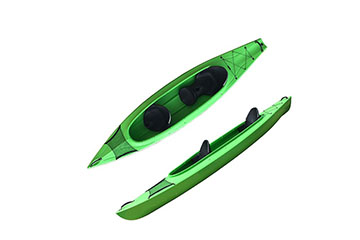What Will Affect The Stability Of The Kayak?
What Will Affect The Stability Of The Kayak?
Is the kayak stable? The quick answer is the yes-the performance of most modern kayaks is very stable. Fishing kayaks are very stable fishing platforms. Recreational kayaking is also a stable recreational enjoyment paddling.
Generally speaking, stability is most affected by the kayak's width, weight distribution, and hull shape.
But more specifically, there are three main factors that affect the stability of the kayak. They are length, width, and volume respectively. The different combinations of these three measurements interact to form the stability of the kayak.
It is generally believed that the wider the kayak, the more stable it is.
But is a wider kayak more stable? It is generally believed that a wide kayak is more stable than a narrow kayak. This is large because it has more surface area to resist sideways dumping. Leaving aside other measurements and paddling conditions, the wider the kayak, the more stable it feels. Stability is the ability of the kayak to resist roll and overturn.
But please stick to my point, because changing to a wider kayak just to increase stability has practical limitations. Depending on the type of kayak you want to row, the width is not always better or more stable.
Kayak dimensions
When it comes to stability, we must know what the kayakers mean by stability. So let's define the measurement value that affects the stability of the kayak the most.
The three dimensions of length, width, and volume we talked about are the dimensions of the kayak.
But why are they important?
It's all about "displacement"
The two main dimensions of a kayak are length and width, but the third measurement is a term called displacement (volume). Simply put, the displacement is the total weight of your kayak and its contents.
But more specifically, when you put your kayak into the water, some of the water will flow out to make room for your kayak. The more water you hold, the more water your kayak will drain. If you weigh the "volume" of the "discharged" water, it is equal to the weight of your kayak and the weight of everything including you.
This weight is the displacement of your kayak.
Kayak length and stability
The length of the kayak has an important influence on the displacement (volume). Because for any given displacement (the weight the manufacturer wants the kayak to hold), when you reduce the width of the kayak, you must increase its length to get the same displacement—ie. Carrying capacity (volume).
This is why when you see those ultra-narrow racing boats, they are also ultra-long. This is why a short and wide kayak can maintain the same weight as a long and narrow kayak.
The width and stability of the kayak
In nautical terms, the width of the kayak is actually called the "beam". The beam is the width of the kayak at its widest point. Although the length of the kayak usually determines the speed of the kayak, and the volume is related to the weight of the kayak, the width is considered by most people to be the biggest factor in the stability of the kayak.











